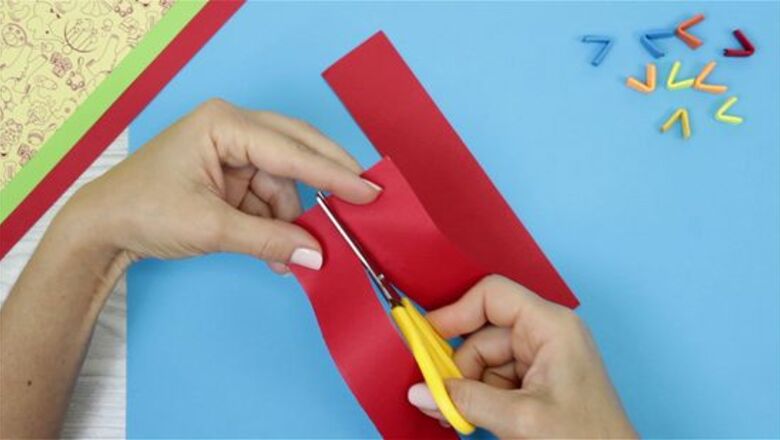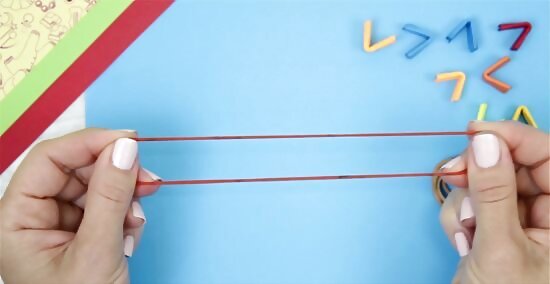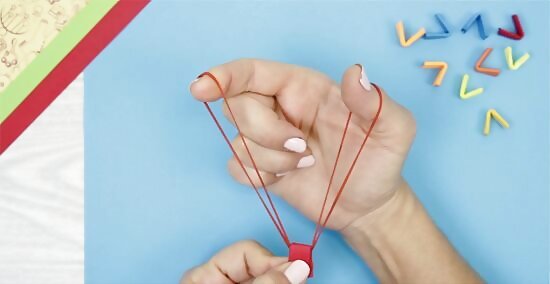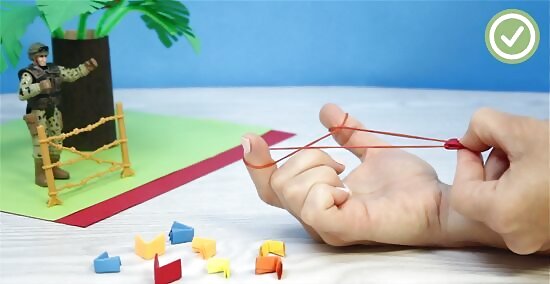
views
Folding or Rolling the Hornet

Cut or tear the paper into a thin strip. Begin by cutting or tearing your paper source into a thin strip. Use scissors for more precise edges, or just tear with your hands if you’re in a hurry. Go straight across the sheet of paper so that the strip is roughly 8 inches (20cm) long and 1 to 1.5 inches (2.5—4cm) wide . Hornets can be improvised out of almost any foldable or rollable material you find lying around, including cardstock, foil, construction paper and newspaper. Get creative if you don’t have any normal paper. Heavy and glossy types of paper will add weight, increasing the distance and impact you can achieve. Creasing the paper with your fingernail before tearing it will result in cleaner edges. By tearing the paper into 4 or 5 individual strips, you can fashion several hornets at a time.

Fold the strip of paper lengthwise. Take the strip of paper you just cut and make a couple of even folds along its length. For this step you can either fold the strip into thirds or double it over in half twice so that it becomes nice and compact. The more times you fold, the farther it will go and the harder it will hit. The idea is to keep the hornet to a predetermined width (that of the original strip of paper) while folding it down to decrease its surface area.

Roll the paper up tight. As an alternative, you can roll the strip of paper into a narrow tube rather than folding it. Some people prefer to roll hornets for the sake of saving time, or to keep them from having to make multiple careful folds. Rolling the paper before folding it into its final shape also makes the hornet more dense, allowing it to shoot better. Rolling your hornets as opposed to folding them can save you time if you’re stockpiling ammunition for friendly warfare. Watch out: hornets made using this method hurt a lot more!

Keep folding the paper lengthwise. Now that the paper has been folded or rolled, turn it and fold it in half lengthwise. Make sure both ends of the paper line up evenly. Then, fold it in half again. The number of times you’re able to fold the hornet will depend on the size of the original paper, as well as your strength and patience. Keep folding until you have a V-shaped projectile that’s roughly an inch (2.5cm) long and tightly packed. After you’re finished, you can reinforce the hornet by wrapping it in duct or electrical tape. The tape will keep it from losing its shape and also give it more heft. This is about as heavy-duty as hornets get. Each time you fold the paper, the hornet will become denser and more difficult to fold. The upside of this is that the reduced size and added density will cause it to sail like a dream.
Launching the Hornet

Find a rubber band. Dig up a rubber band you can use to fire the hornet. Any type of rubber band will work, as long as it’s not too small, or brittle with age. Test the rubber band by seeing how far you can stretch it. More stretch equals a faster, longer shot. For best results, see if you can obtain one of the thick, colorful bands used to secure the stalks of produce at grocery stores. Rubber bands that are old, dry or show signs of wear and tear are prone to snapping unexpectedly. This could be bad news if it were to hit you in the face or eyes.

Loop the ends of the rubber band over your thumb and forefinger. Place one end of the rubber band over your pointer finger and the other end over your thumb. To launch the hornet, you’ll be using your hand like a makeshift slingshot. Position the rubber band so that it wraps flat around your hand without any twists. Keep your fingers braced firmly when you pull back the hornet to generate more elastic energy.

Fit the hornet into the rubber band. Grab the hornet with your free hand. Align the center crease of the hornet horizontally with the rubber band so that the ends are pointing straight up and down. Make sure the paper stays neatly folded before you attempt to shoot it. If the last fold you made in the hornet isn’t perfectly even, it may not shoot straight.

Pull back on the ends of the hornet. Take hold of the ends of the hornet on either side of the rubber band and pinch them together. The hornet should now be enclosing the rubber band, with the crease grabbing both strands for maximum power. Draw back the hornet until the rubber band is at full tension. Don’t pull the rubber band back too far or it could snap.

Aim and release. Sight between your thumb and forefinger to pick out where you want to place your shot. Be careful to keep your palm facing upwards so that the hornet doesn’t strike the webbing of your hand when you let go. When you’ve zeroed in on your target, let it fly! Try getting in a little target practice with stationary objects before putting your hornets into action for real. Release the hornet in one quick motion to keep from dulling your shot. When launched at high speeds, hornets can really pack a wallop. There is a real risk of injury if a hornet were to hit someone in any of the sensitive areas of the face.




















Comments
0 comment